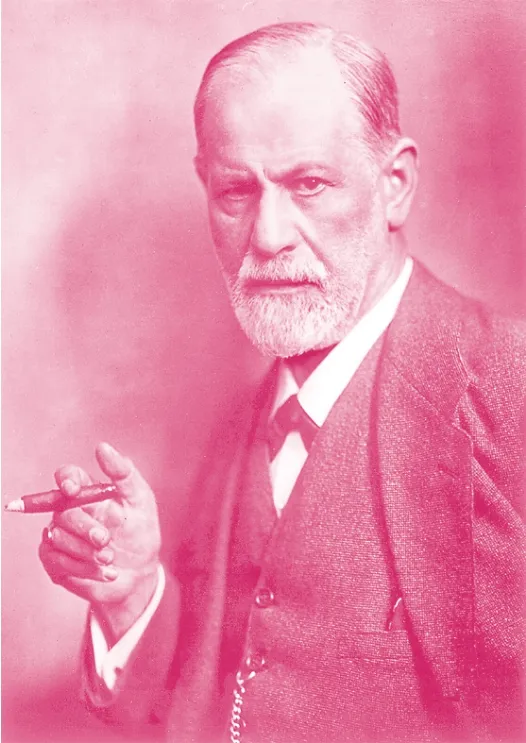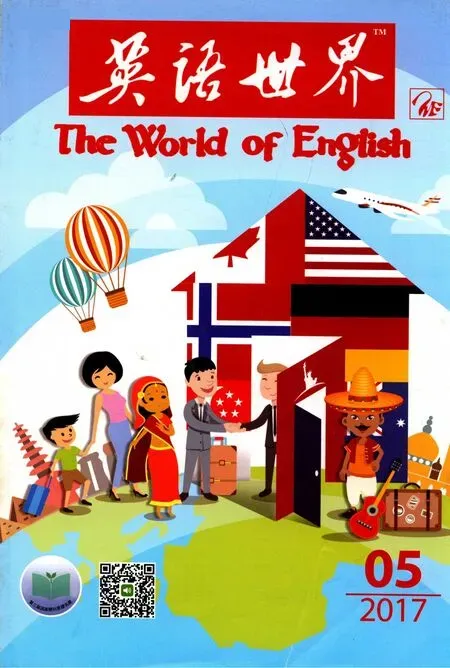移民多天才之奥秘
文/埃里克·韦纳 译/刘小娟 审订/马士奎
移民多天才之奥秘
文/埃里克·韦纳 译/刘小娟 审订/马士奎
Having your world turned upside down sparks creative thinking.
Scan the roster of history’s intellectual and artistic giants, and you quickly notice something remarkable:Many were immigrants or refugees,from Victor Hugo, W.H. Auden and Vladimir Nabokov to Nikolas Tesla,Marie Curie and Sigmund Freud. At the top of this pantheon sits the genius’s genius: Einstein. His “miracle year” of 1905, when he published no fewer than four groundbreaking scientific papers,occurred after he had emigrated from Germany to Switzerland.
[2] Lost in today’s immigration debate is this unavoidable fact: An awful lot of brilliant minds blossomed in alien soil. That is especially true of the U.S.,a nation de fi ned by the creative zeal1zeal热情。of the newcomer. Today, foreign-born residents account for only 13% of the U.S.population but hold nearly a third of all patents and a quarter of all Nobel prizes awarded to Americans.
[3] But why? What is it about the act of relocating to distant shores—voluntarily or not—that sparks creative genius?
[4] When pressed to explain, we usually turn to a tidy2tidy清清楚楚的。narrative: Scruffy3scruffy邋遢的;不整齐的。but determined immigrant, hungry for success, arrives on distant shores. Immigrant works hard. Immigrant is bolstered4bolster援助,支持。by a supportive family, as well as a wider network from the old country.
[5] It is an inspiring narrative—but it is also misleading. That fierce drive might explain why immigrants and refugees succeed in their chosen fi elds, but it fails to explain their exceptional creativity. It fails to explain their genius.
[6] Recent research points to an intriguing5intriguing有趣的。explanation. Several studies have shed light on the role of “schema6schema(计划或理论的)提要,纲要。violations7violation违反,违背。” in intellectual development. A schema violation occurs when our world is turned upside-down, when temporal8temporal时间的。and spatial9spatial空间的。cues are offkilter100 off-kilter异乎寻常的;离奇的。.
[7] In a study led by the Dutch psychologist Simone Ritter and published in theJournal of ExperimentalSocial Psychology, researchers asked some subjects to make breakfast in the“wrong” order and others to perform the task in the conventional manner. Those in the fi rst group—the ones engaged in a schema violation—consistently demonstrated more “cognitive fl exibility,” a prerequisite for creative thinking.
[8] This suggests that it isn’t the immigrant’s ambition that explains his creativity but his marginality11marginality边际;边缘。. Many immigrants possess what the psychologist Nigel Barber calls “oblique12oblique倾斜的。perspective.” Uprooted13uproot(使)离开家园(或熟悉的地方等)。from the familiar, they see the world at an angle,and this fresh perspective enables them to surpass the merely talented. To paraphrase the philosopher Schopenhauer: Talent hits a target no one else can hit. Genius hits a target no one else can see.
[9] Freud is a classic case. As a little boy, he and his family joined a fl ood of immigrants from the fringes14fringe边缘。of the Austro-Hungarian empire to Vienna, a city where, by 1913, less than half the population was native-born. Freud tried to fit in. He wore lederhosen15lederhosen(阿尔卑斯山民的)皮短裤。and played a local card game called tarock, but as a Jew and an immigrant, he was never fully accepted. He was an insider-outsider,residing far enough beyond the mainstream to see the world through fresh eyes yet close enough to propagate16propagate宣传。his ideas.
[10] Marie Curie, born and raised in Poland, was frustrated by the lack of academic opportunities in her homeland. In 1891, at age 24,she immigrated to Paris. Life was difficult at first; she studied during the day and tutored in the evenings. Two years later, though, she earned a degree in physics, launching a stellar17stellar杰出的;优秀的。career that culminated18culminate达到高潮。with two Nobel prizes.
[11] Exceptionally creative people such as Curie and Freud possess many traits, of course, but their “openness to experience”19经验开放性是西方国家广泛应用于人才测评以及职场招聘中的五因素人格理论模式(Five Factor Model)所描述的一种人格特质,指一个人喜欢尝试新点子和新活动的程度。is the most important,says the cognitive psychologist Scott Barry Kaufman of the University of Pennsylvania. That seems to hold for entire societies as well.
[12] Consider a country like Japan,which has historically been among the world’s most closed societies. Examining the long stretch20stretch(连续的)一段时间。of time from 580 to 1939, Dean Simonton of the University of California compared Japan’s “extra cultural influx” (from immigration,travel abroad, etc.) in different eras with its output in such fields as medicine,philosophy, painting and literature. Dr.Simonton found a consistent correlation21correlation相互关系 (尤指互有因果关系)。: the greater Japan’s openness, the greater its achievements.
[13] It isn’t necessarily new ideas from the outside that directly drive innovation, Dr. Simonton argues. It’s simply their presence as a goad22goad刺激;鼓励。. Some people start to see the arbitrary nature of many of their own cultural habits and open their minds to new possibilities.Once you recognize that there is another way of doing X or thinking about Y, all sorts of new channels open to you, he says. “The awareness of cultural variety helps set the mind free,” he concludes.
[14] History bears this out. In ancient Athens, foreigners known as metics233 metic(古希腊城邦中)享有部分公民权的外侨。(today we’d call them resident aliens24resident alien〈美英〉外侨。)contributed mightily to the city-state’s brilliance. Renaissance Florence recruited the best and brightest from the crumbling25crumbling破碎的。Byzantine Empire. Even when the “extra cultural in fl ux” arrives uninvited, as it did in India during the British Raj26Raj英国统治印度的时期。, creativity sometimes results. The intermingling27intermingle混合。of cultures sparked the “Bengal Renaissance” of the late 19th century.
[15] In a 2014 study published in theCreativity Research Journal, Dr. Ritter and her colleagues found that people did not need to participate directly in a schema violation in order to boost their own creative thinking. Merely watching an actor perform an “upside-down” task did the trick28do the trick达到目的;达到(预期的)效果。, provided that the participants identi fi ed with the actor. This suggests that even non-immigrants bene fi t from the otherness29otherness相异;他物。of the newcomer.
[16] Not all cultural collisions end happily, of course, and not all immigrants become geniuses. The diversity that spurs30spur促进,激发。some to greatness sends others into despair. But as we wrestle with31wrestle with全力对付,设法解决。our own immigration and refugee policies, we would be wise to view the welcome mat322 welcome mat门前的擦鞋垫。主要用于短语put out the welcome mat,因而引申为“热烈欢迎,盛情招待”。not as charity but, rather,as enlightened33enlightened开明的;摆脱偏见的。self-interest. Once creativity is in the air34in the air正在发生;即将到来。, we all breathe a more stimulating air. ■
颠覆原有世界,激发创新思维。
纵观史上知识界和艺术界巨人名录,很快就会发现非同寻常之处:许多人都是移民或难民。从维克多·雨果、W. H.奥登和弗拉基米尔·纳博科夫,到尼古拉·特斯拉、居里夫人和西格蒙德·弗洛伊德,概莫如是。端坐这一巨人殿堂首席的是天才中的天才:爱因斯坦。1905年是爱因斯坦的“奇迹之年”,这一年,他先后发表了至少四篇具有突破意义的科学论文,这恰恰发生在他从德国移居瑞士之后。
[2]时下有关移民问题的论辩湮没了一个无法回避的事实:很多才华横溢的人曾在异国他乡大放光彩。在美国尤其如此,新移民的创新热情成为这一国度的显著特征。如今,外国出生的居民仅占美国人口的13%,却拥有全美近三分之一的专利,在获诺贝尔奖的美国人中,他们也占据了四分之一。
[3]原因何在?远渡重洋——且不说是否出于自愿——何以造就创新天才?
[4]如果非要加以解释,我们通常会说得头头是道:移民们踏上遥远的陆地时,虽然衣着寒酸,但是意志坚定,渴求成功。他们勤奋刻苦,有家人的支持,更为广泛的来自家乡的人脉也是他们的后盾。
[5]这种说法的确鼓舞人心,不过也会产生误导。强大的动力或许可以说明移民和难民为何在自己选择的专业领域取得成功,却无法解释他们的非凡创造力和过人天赋。
[6]最近的研究提出一种有趣的解释。几项研究都证明了“违反常规”在智力发展中的作用。如果我们的世界发生翻天覆地的变化,时空信息紊乱,便会出现违反常规的情形。
[7]荷兰心理学家西蒙娜·里特领衔进行了一项研究,论文发表在《实验社会心理学杂志》上。研究人员要求部分受试者做早餐时“不按”惯常顺序,其余人则采用常规方式。结果前一组违反常规的人总是展现出更高的“认知灵活性”,而这正是创造性思维的先决条件。

弗洛伊德
[8]这表明,移民的创新能力并非源于其雄心壮志,而是其边缘地位。很多移民具有心理学家奈杰尔·巴伯所谓的“倾斜视角”。他们背井离乡,得以用全新视角观察世界,这使他们超越了那些仅仅天赋异秉的人。套用哲学家叔本华的话说:能者达人所不达,天才达人所未见。
[9]弗洛伊德就是一个典型例子。小时候,他和家人加入难民潮,从奥匈帝国边陲来到维也纳。到1913年,维也纳土生土长的当地人还不到该城总人口的一半。弗洛伊德穿皮短裤,玩当地的塔罗克牌,试图融入其中。然而,作为犹太移民,他始终没有被完全接受。他是一个局内的局外人,站在离主流社会足够远的地方,能用全新的眼光审视这个世界,同时又离得足够近,得以宣传自己的思想。
[10]居里夫人在波兰出生和长大,苦于在自己的祖国缺少求学机会,1891年,24岁的她移居巴黎。起初,生活非常艰难,她只好白天学习,晚上做家教。不过两年后,她获得物理学硕士学位,由此投入科研事业,成就斐然,曾两次荣获诺贝尔奖,达到事业的顶峰。
[11]宾夕法尼亚大学认知心理学家斯科特·巴里·考夫曼说, 毋庸置疑,像居里夫人和弗洛伊德这样具有超凡创造力的人当然拥有许多特质,然而最为重要的是他们都具有“经验开放性”。这一点似乎同样适用于整个社会的发展。

居里夫人
[12]以日本为例,它历史上曾是世界上最封闭的社会之一。加利福尼亚大学的迪恩·西蒙顿考察了日本自580年至1939年这段漫长的历史,对日本不同时期的“外来文化输入”(通过移民、出国旅游等方式)与医药、哲学、绘画和文学等领域的产出做了比较。西蒙顿博士发现二者始终是相互影响的:日本越开放,成就越大。
[13]西蒙顿博士认为,泊来的新思想未必直接带来创新。它们的存在不过是一种刺激因素。一些人开始认识到许多自身文化习惯的随意性,故而对新的可能性持开放心态。他说,一旦人们意识到还有另外一种做事或思考的方式,就会找到各种各样的新出路。西蒙顿由是得出结论:“认识文化多样性有助于解放心智。”
[14]历史证明了这一点。在古雅典,人称“外邦人”的外国人(今天我们会称其为外侨)为整个城邦的辉煌做出了卓越贡献。文艺复兴时期的佛罗伦萨就从摇摇欲坠的拜占庭帝国招募了最杰出的人才。即使“外来文化输入”系不请自来,正如英国殖民统治下的印度所处的局面,有时也会激发创新。19世纪晚期的“孟加拉文艺复兴”即是文化融合的产物。
[15]里特博士及其同事的一项研究成果2014年发表于《创造力研究杂志》。他们发现,人们不必通过直接参与违反常规的活动来提升创新思维能力。仅仅旁观“违反常规”之举就可以有所收获,只要你能认同这种做法。这就表明,即使非移民也能从新移民的不同之处获益。
[16]当然,并非所有文化碰撞都有美满结局。同样,也并非所有移民都能成为天才。文化多样性造就一些伟人,同时也让另一些人深陷绝望。不过,在斟酌移民和难民政策时,我们应该明智地认识到,欢迎移民并非慈善之举,而是出于对自身利益的开明考虑。一旦创新之风兴起,人人都会感受到更强的激励。 □
The Secret of Immigrant Genius
ByEric Weiner
(译者单位:中央民族大学外国语学院)

